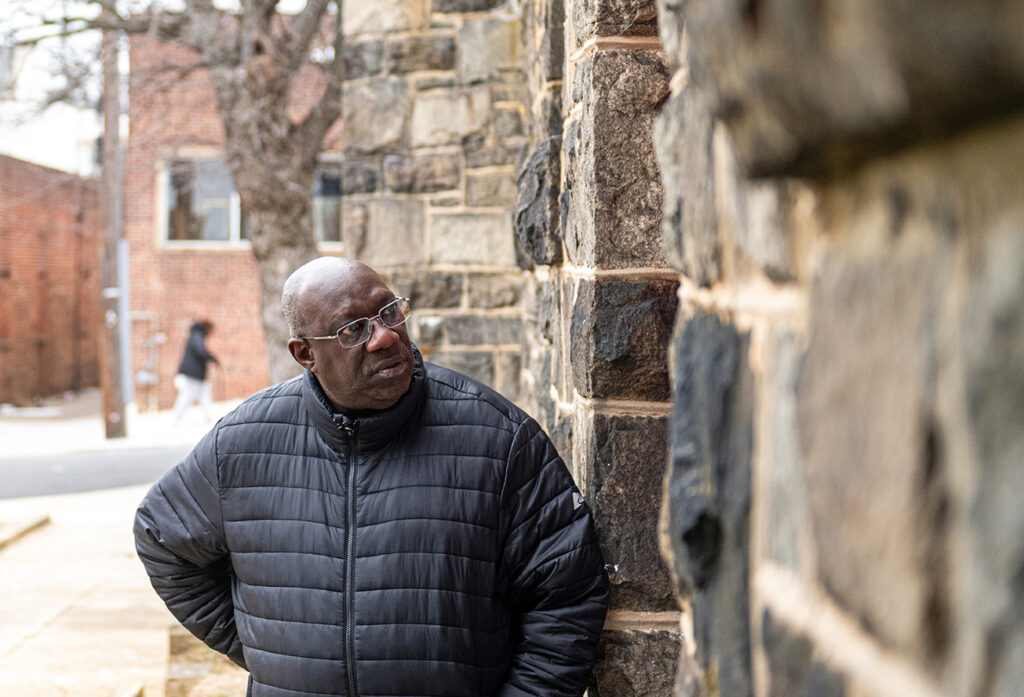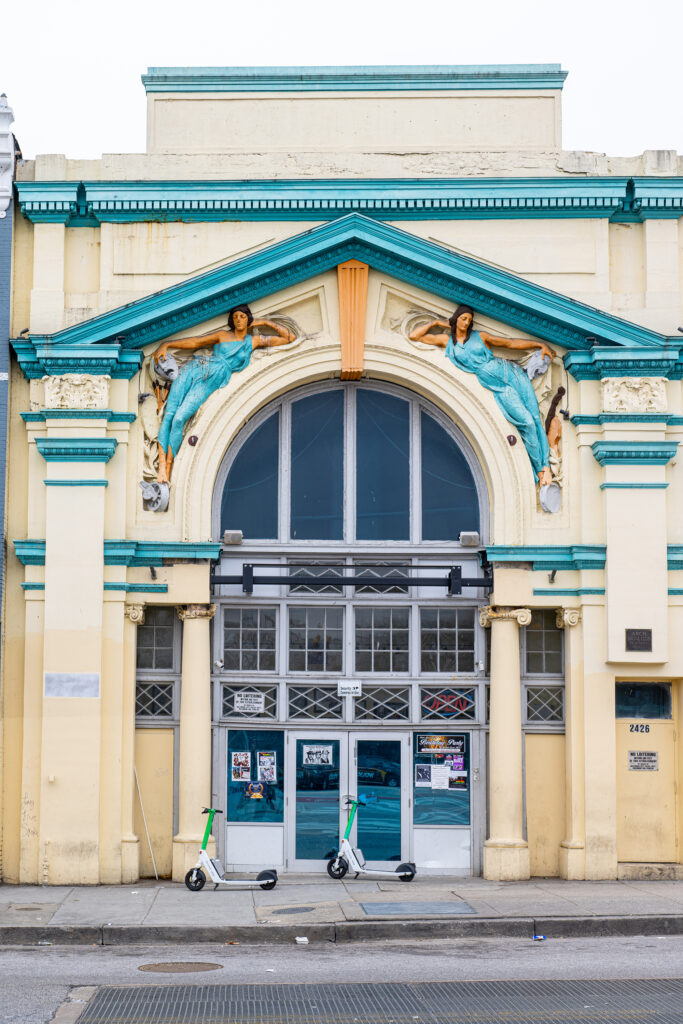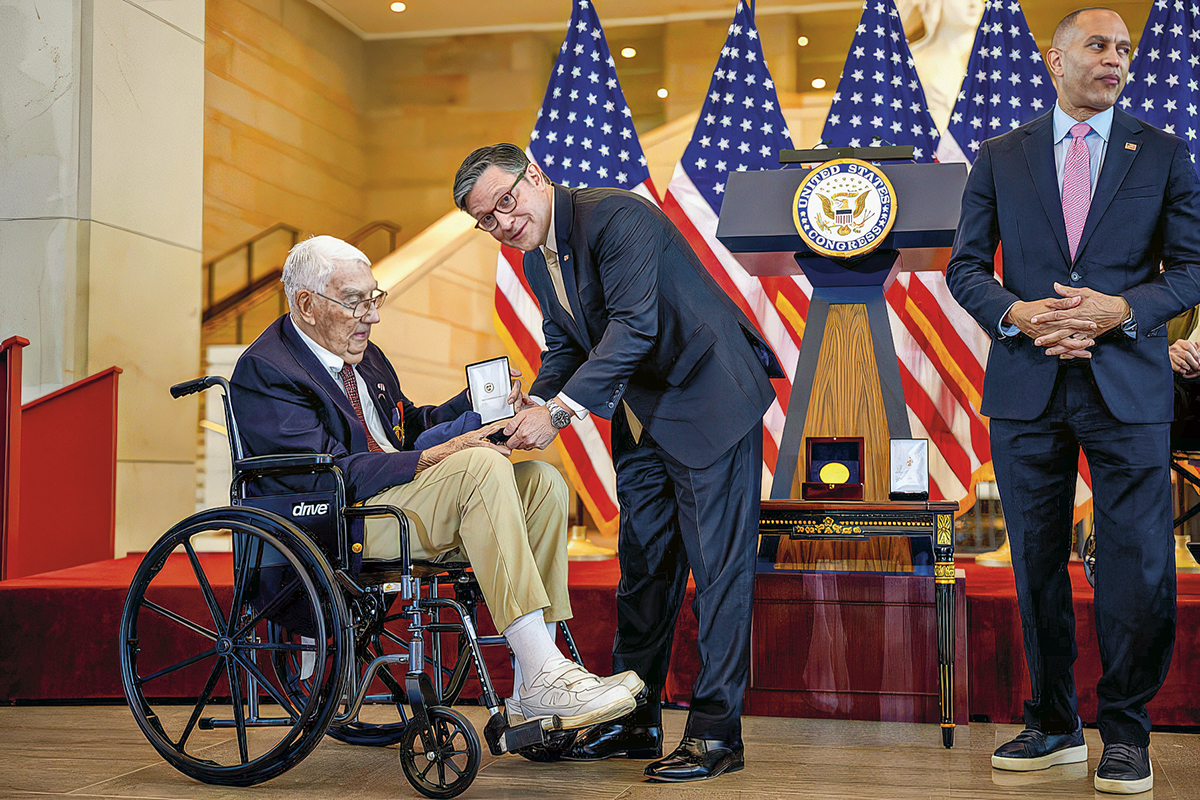West Baltimore rising
Prof. Gladstone “Fluney” Hutchinson and Lafayette’s Economic Empowerment and Global Learning Project inspire hope in Charm City.
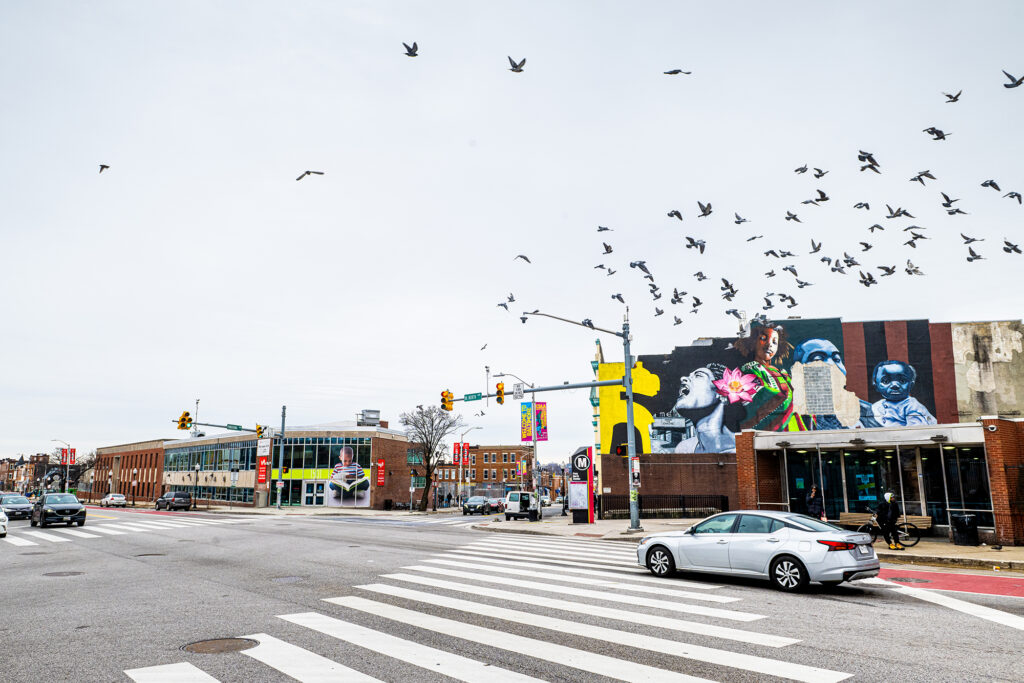
Photography by adam atkinson
Growing up in Kingston, Jamaica, Gladstone “Fluney” Hutchinson developed what would become a karmic bond with Baltimore.
In his youth, between soccer matches, he and his friends would listen endlessly to Nina Simone’s hardscrabble lyrics in her song “Baltimore” as covered by the 1960s Jamaican reggae vocal group The Tamlins.
Hard times in the city
In a hard town by the sea
Ain’t nowhere to run to
There ain’t nothin’ here for free
“When I grew up in Jamaica, this was the No. 1 song. This was our song,” says Hutchinson, associate professor of economics and policy studies and Whitman Family Director of the Gladstone Whitman ’49 Endowment Funds.
The haunting lyrics would stay with him as his life and career progressed. He moved to the United States in the late 1970s after receiving a soccer scholarship at State University of New York at Oneonta, where he studied economics and business. After his graduate work at Clark University in Worcester, Mass., he landed his academic position at Lafayette in 1992.
From there, Hutchinson helped burnish an international reputation for Lafayette College by founding its Economic Empowerment and Global Learning Project (EEGLP) in 2007.
By partnering with well-established civic organizations and bringing together faculty, students, and alumni from varied disciplines, the organization has helped reestablish economic autonomy in Appalachia, Honduras, and Jamaica, as well as in New Orleans after the damage caused by Hurricane Katrina. As director general of the Planning Institute of Jamaica, Hutchinson was charged with implementing Vision 2030, the country’s long-term plan for a competitive economy, secure and sustainable environments, and a future for Jamaicans to enjoy social and economic prosperity. In 2013, he was named a nation builder, receiving a Medal of Appreciation from the prime minister.
Five years ago, the Arch Social Club of Baltimore, one of the oldest African American social clubs in the nation, approached Hutchinson and retired Stanford University economist Donald Harris about developing a strategy to bring about social and economic redress to Charm City. The club has long been a hub for the African American community to come together for programs promoting economic, social, and cultural growth, and it was a natural incubator to light a revival. There’s a busy metro station at its doorstep, and its striking Beaux Arts architecture, decorative Corinthian columns, and a pair of bas-relief muses on its facade radiate hope and optimism.
West Baltimore, where the club is located, comprises about 175 city blocks of hope, even with its lingering scars from the unrest following the murder of the Rev. Martin Luther King Jr. in 1968 and the death of Freddie Gray while in Baltimore police custody a decade ago.
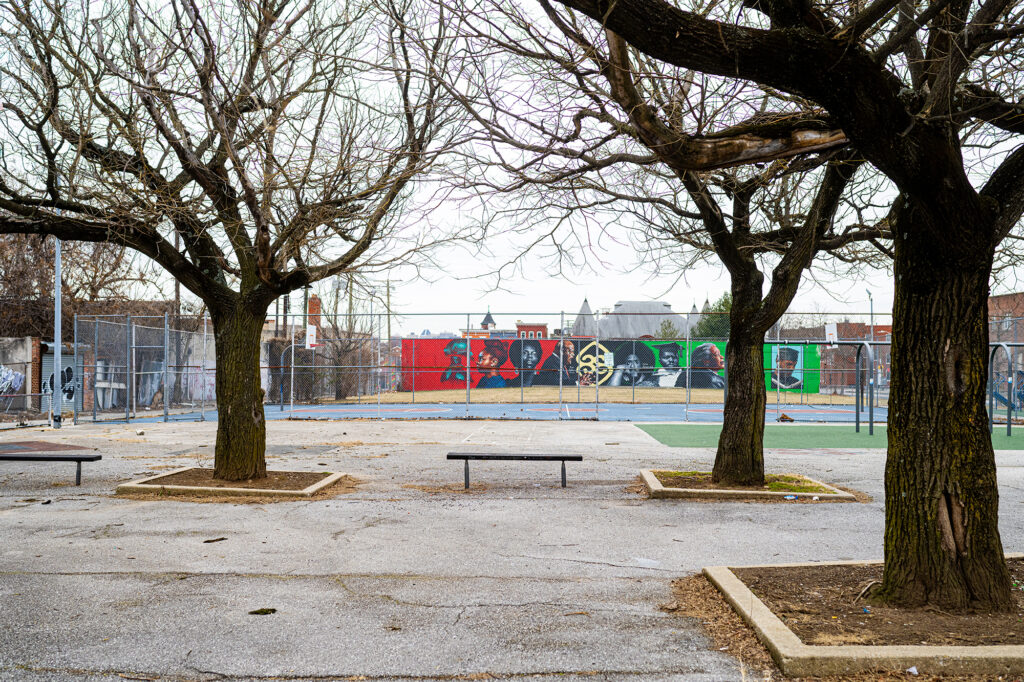
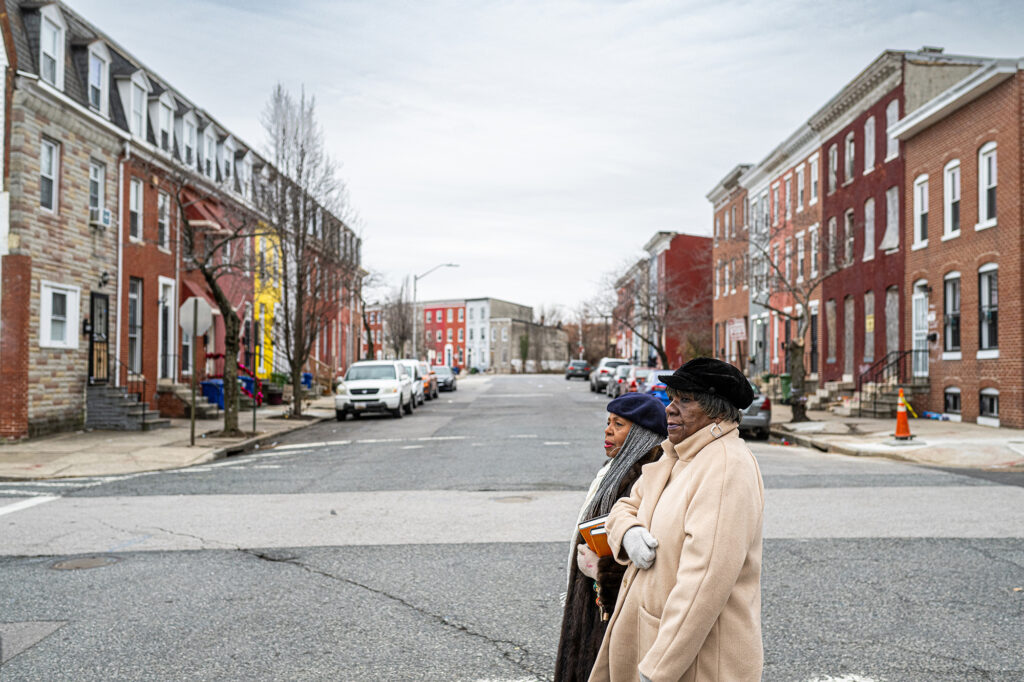
Despite this, and in the face of the drug trafficking and crime, there are streets of West Baltimore lined with churches, schools, and even brownstones ornamented with bay windows, terracotta designs, and spires. While there is poverty, and so much loss, a rich history remains. This is the same place that, in the 1920s, jazz great Cab Calloway grew up in a rowhouse on Druid Hill Avenue and received his musical training. It’s also the former home of Supreme Court Justice Thurgood Marshall, who attended elementary school in the Upton neighborhood of West Baltimore during racial segregation.
There is a lot of inspiration in a hard town by the sea.
Seeding a renaissance
Over the last several years, Hutchinson, his wife, Ute Schumacher, visiting professor of economics, and his Lafayette students participating in EEGLP have been positioning West Baltimore for a renaissance.
Hutchinson’s EEGLP projects stand apart from most other economic development initiatives because they avoid a “we knew best” posture. Instead, they involve input and collaboration from key stakeholders and offer more of a gentle hand-on-the-shoulder approach to reawaken and remind residents of possibilities. Through a series of structured and unstructured conversations, they build trust and recognize the potential in latent cultural assets often already in place.
Early on in the West Baltimore project, during the COVID-19 pandemic, Hutchinson, Schumacher, and the Whitman fellows met twice a week over Zoom with community stakeholders; they delivered their first virtual presentation in October 2020. Building on that mutual trust, West Baltimore later invited the Lafayette students into its barber shops, art galleries, parks, official business places, schools, and eating establishments for honest conversations about the community’s aspirations. As part of the highly interdisciplinary group, Lafayette engineering students used satellite imagery to monitor traffic flows throughout Baltimore and Maryland, and confirmed their findings in frequent meetings with Baltimore officials.
As a result of the group’s work, a few foundational pillars were identified to guide the redevelopment of West Baltimore: heritage, culture, and agency.
In its final report, the EEGLP suggested a reimagined corridor in the cultural heart of the neighborhood on North and Pennsylvania avenues, replete with galleries featuring Smithsonian exhibits to celebrate the neighborhood’s culture and civic voice; a theater for Baltimore playwrights, spoken word artists, and musical performances; a Black heritage reception hall; and a community meeting and learning space. EEGLP is also working with the West North Avenue Development Authority, the funding agency established by the State of Maryland to support economic growth in the neighborhoods of West Baltimore, for a small business center, storefronts, and commercial spaces.
New plans were also envisioned for the U.S. 40 “Highway to Nowhere,” a 1.4-mile stretch of freeway left unfinished in the 1970s. (The project infamously divided West Baltimore neighborhoods and displaced residents, leaving behind a lasting concrete scar.) In January, Maryland’s congressional delegation announced the allocation of more than $85 million in federal funding to reconnect these neighborhoods to the city’s business district; EEGLP also made recommendations for that area including a museum and performance center, plus a STEAM-based school for leadership and innovation.
“What I like most is being able to integrate the foundational cultural presence in West Baltimore and aligning it with how economic development can happen. It makes a statement that development should be more about people and not products,” says Denise Griffin Johnson, former executive director of the Arch Social Community Network and project leader. “Dr. Hutchinson and his students showed us how those two frameworks, culture and economics, can come together.”
A lifelong resident of West Baltimore who grew up during racial segregation, Johnson remembers what was once a “wholeness” to the neighborhood. “You knew your professionals, you knew your teachers, you knew everybody who lived together,” she says. “And then, over time, as integration happened, people chose to leave, and things just completely started to go downhill. I kind of looked up and asked what happened to my community?”
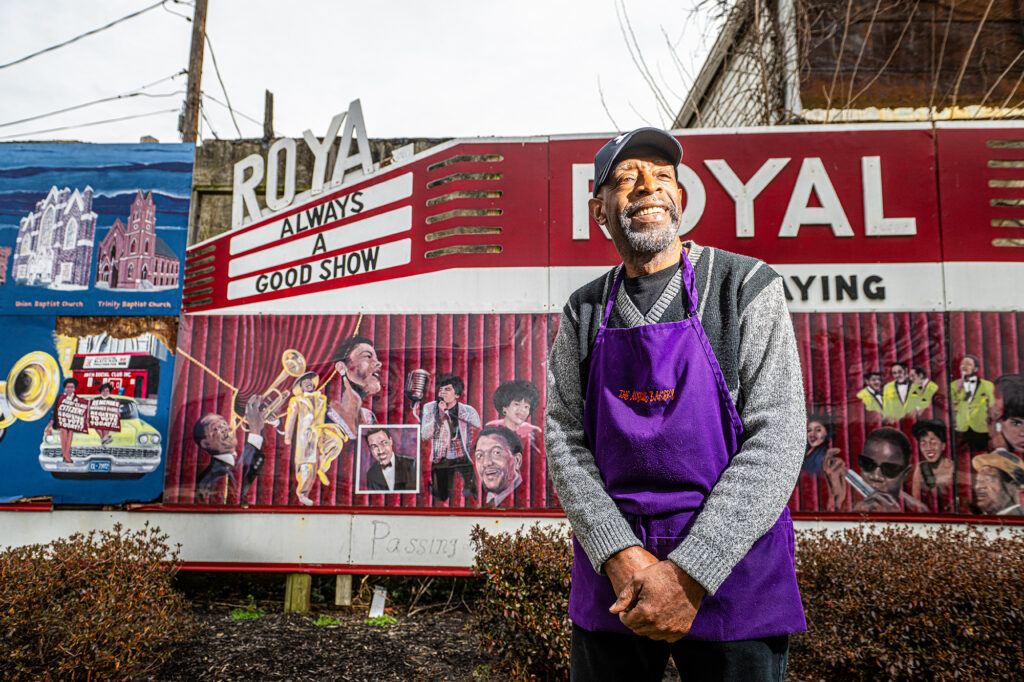
Grace Boghosian ’25, a Whitman scholar who’s majoring in economics and French, spent two years on the EEGLP project team. Now, she explains, their recommendations are in the hands of the West Baltimore community. “We collected a lot of data and supported this community without going in and telling them what to do,” Boghosian stresses. “Because in order for change to actually occur, the community has to want to do it, and they have to want to do it their way and how they see fit.”
Hutchinson describes the approach as “reawakening their best promise” in West Baltimore and breaking through the systemic disorders of social mobility, where poverty reinforces itself in that ecosystem.
“Dr. Hutchinson and his students have reminded me, and others, that this is my place of belonging, where I am comfortable, where I am connected,” Johnson says. “Our aspirations have been documented. We have a vision.”
Marion Blackwell of the Historic Marble Hill Community Association, a resident of West Baltimore since 1970 and a member of the project team, agrees with Johnson’s assessment. She expressed her thanks to the EEGLP team for its “innovative knowledge-discovery process.”
Blackwell describes her experiences with Lafayette and EEGLP as an “energized encounter in which all spoke freely of the community’s concerns, hopes, and aspirations,” noting how the open conversations provided a framework to awaken West Baltimore. Now, she says, residents are inspired to think about the real value in their cultural heritage.
Weightless humility
Khalid Al-Motaery ’23, who served as student captain on the West Baltimore project and joined Hutchinson in summer 2021, says the project taught him the importance of humility.
“I remember Prof. Hutchinson talking about the importance of being weightless as a learner,” he says. “When you come to a situation, you try to be as objective and humble as you can and not bring in your perceptions about the people. It’s about learning from others, knowing other people have experiences that will definitely help you.”
Now an analyst within the strategic assignment section of the Public Investment Fund, Saudi Arabia’s influential sovereign wealth fund, Al-Motaery has tapped into his West Baltimore experience to support Saudi Arabia’s goal of getting 50% of its electricity from renewable energy by 2030.
“The work really impacted me. When you are humble, when you admit not knowing everything, when you say you want to learn from the person in front of you, you actually perform better professionally,” he says. “We had that mindset when we went into West Baltimore. We went there to help the community rebuild economically and socially, not to parachute in like some consultants who professed to have all of the right answers.”
When Johnson gazes out of the windows from the Arch Social Club, she envisions a West Baltimore with vibrant business and cultural corridors “filled with people who feel good about the community that they inhabit.”
When she engaged the EEGLP and Profs. Hutchinson and Harris, she knew in the moment she had a team that would work tirelessly on the behalf of the neighborhood.
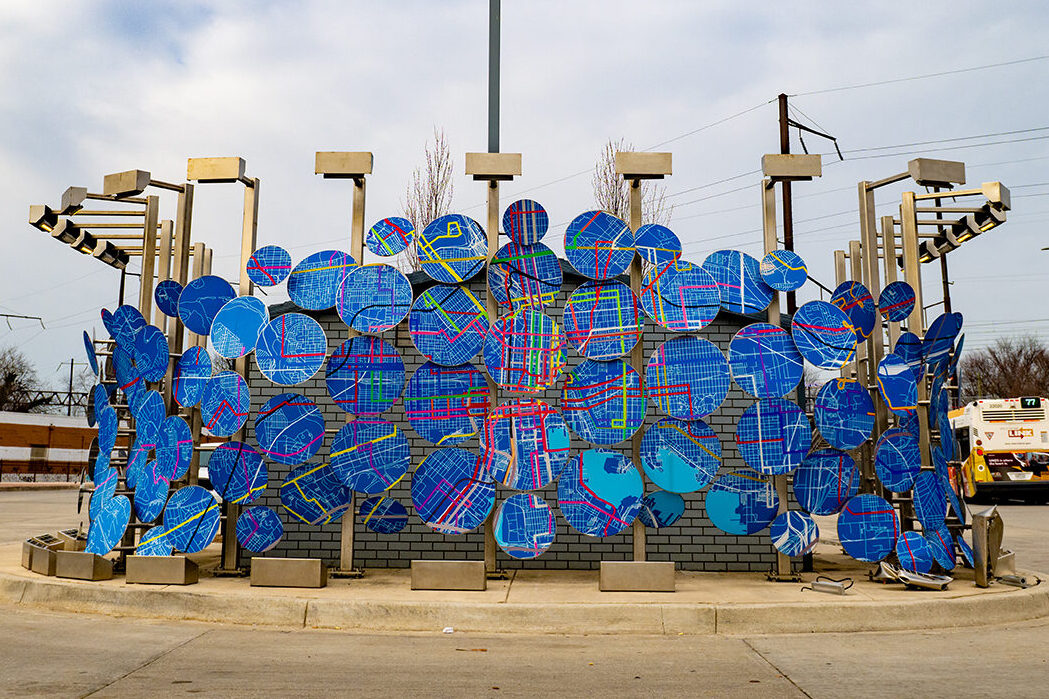
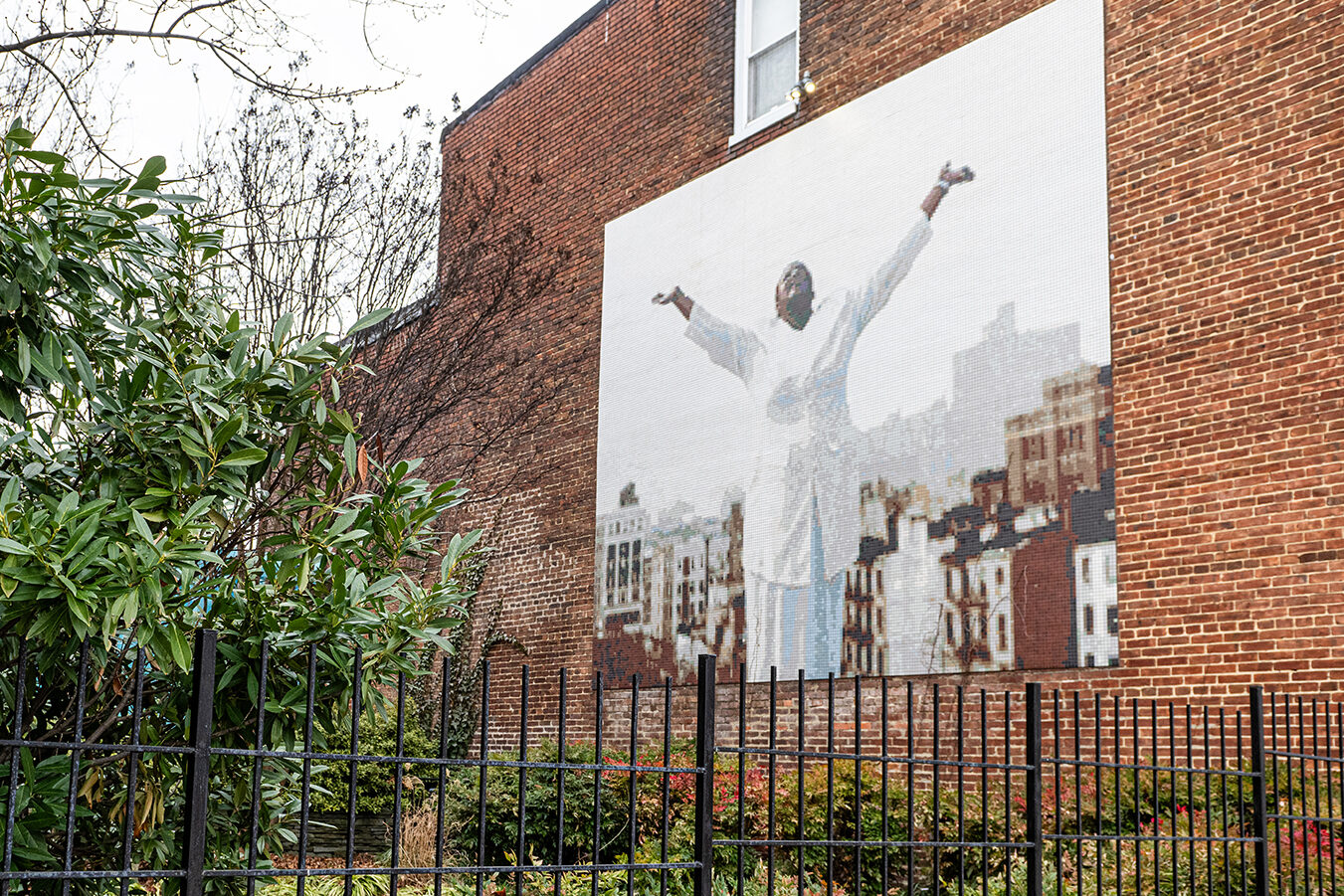
“At our initial meeting, we ended up with a room full of people. I was not expecting that at all,” Johnson recalls. “For me, as a person on the ground organizing work, the project was phenomenal. Because who would expect this level of intensity and knowledge invested in West Baltimore?”
Another person on the ground is Kyara Uqdah ’11 (economics in business), who founded and operates the Baltimore real estate company Charm City Buyers with her husband, Khalil Uqdah. They recently received a $250,000 grant from the West North Avenue Development Authority, which will provide seed money to rehab vacant row homes and provide affordable housing for employees of Coppin State University, one of the partners in the EEGLP’s project.
“We’re known for taking quintessential Baltimore properties that have fallen into disrepair and turning them back into beautiful homes,” Uqdah says. “We’re excited to do the same thing in West Baltimore, which had been disinvested in for so many years, and blow off the dust and highlight those buildings in and around the North Avenue corridor.”
West Baltimore and its rich history tend to get overlooked, she notes.
“From entrepreneurship to the arts and everywhere in between, there’s tons of culture in West Baltimore,” Uqdah says. “Projects such as the one Prof. Hutchinson has led gives these stories a platform. There’s no shortage of charm in West Baltimore, just like the rest of the city.”
As Boghosian prepares to enter the professional world later this year at BlackRock Inc., a multinational investment company, she already knows that her EEGLP experience will be a guiding light: “We made a recommendation through a very personal partnership with this community,” she says. “We didn’t want to take away the beautiful moments they’ve already created.”
Al-Motaery shares the optimism and remembers walking through West Baltimore with Hutchinson, Schumacher, and his fellow Whitman scholars. “I remember just standing there and saying, ‘you know, it’s really great that we’re part of this,’” he says. “People want their community to become better.”
The experience taught him the value in being able to imagine on behalf of a city, and to create hope. “It was a true blessing to be a part of it,” he says. “I really hope that other students at Lafayette are also exposed to these kinds of meaningful experiences.”
“We heard gut-wrenching stories, but to see people building this strong social network is truly remarkable and inspiring.”
Boghosian immediately recognized imperishable hope when she encountered West Baltimore businesses that have not just withstood all of the turmoil—but also evolved to become centers of trust and security among residents. Specifically, a salon and barber shop come to mind. “You can sense the outpouring of love and care in these places,” she says. Behind these storefronts are people who, for example, take in kids when their parents can’t care for them. Says Boghosian: “Community leaders will help anchor this redevelopment. We heard gut-wrenching stories, but to see people building this strong social network is truly remarkable and inspiring.”
The same kind of optimism, and strategy, is expected from the newest EEGLP project that has just begun in Moldova to help support its goal to join the European Union, establish free markets, and—as a former Soviet state—firmly claim its sovereignty. This country marks Lafayette’s first project in Europe.
Even though the Baltimore project has wrapped, Hutchinson won’t be leaving Charm City anytime soon. He now owns a second home there and visits as often as he can, the “Baltimore” song always ringing in his ears.
“Here I am, still working in West Baltimore and Kingston at the same time. That’s the story, right?” Hutchinson laughs. “In many ways, these cities are exactly alike, in terms of their challenges. They’re the same kind of port cities, with many of the same kind of stories. And they share the same dreams of securing a prosperous future based on economic empowerment.”

